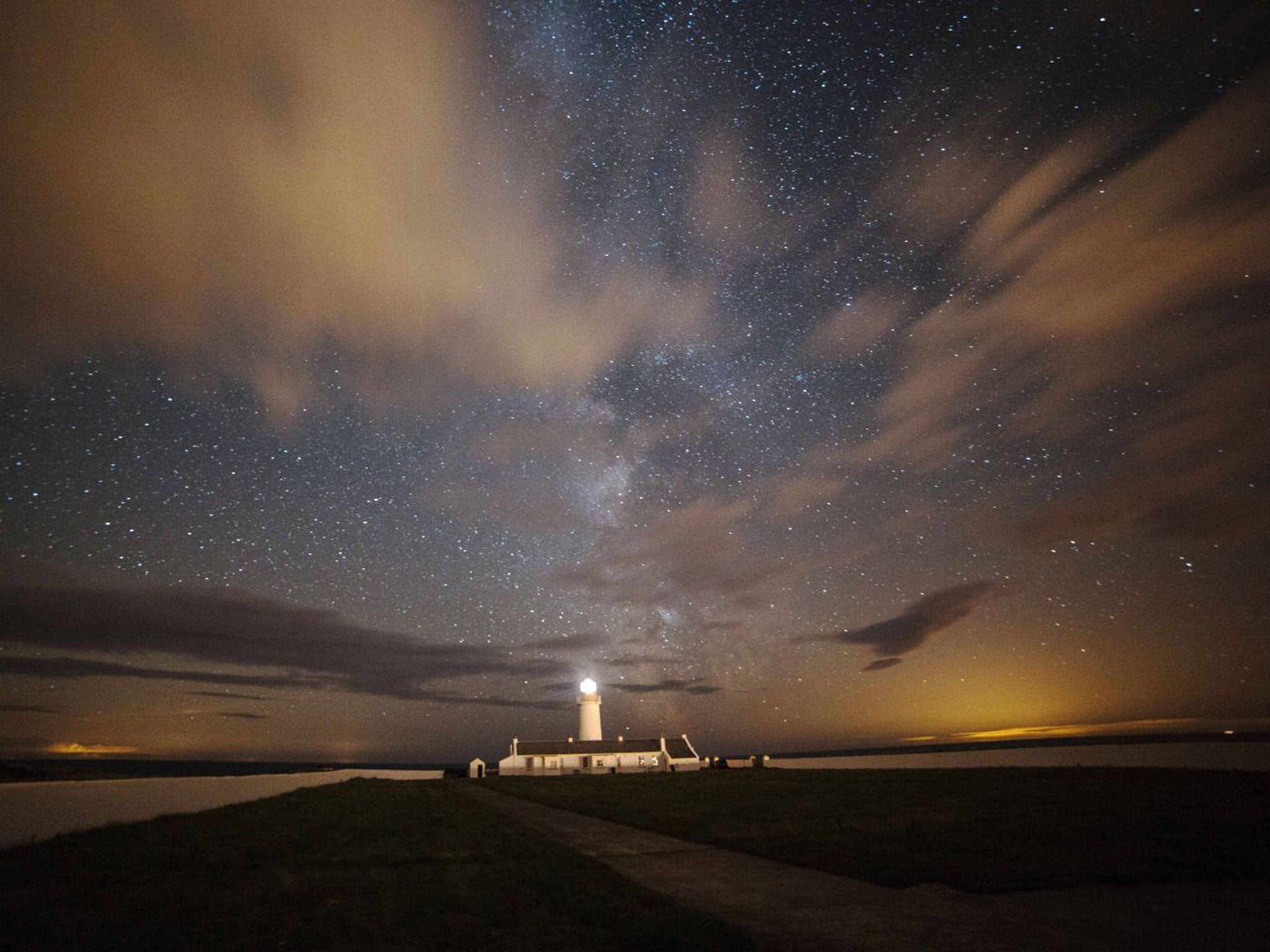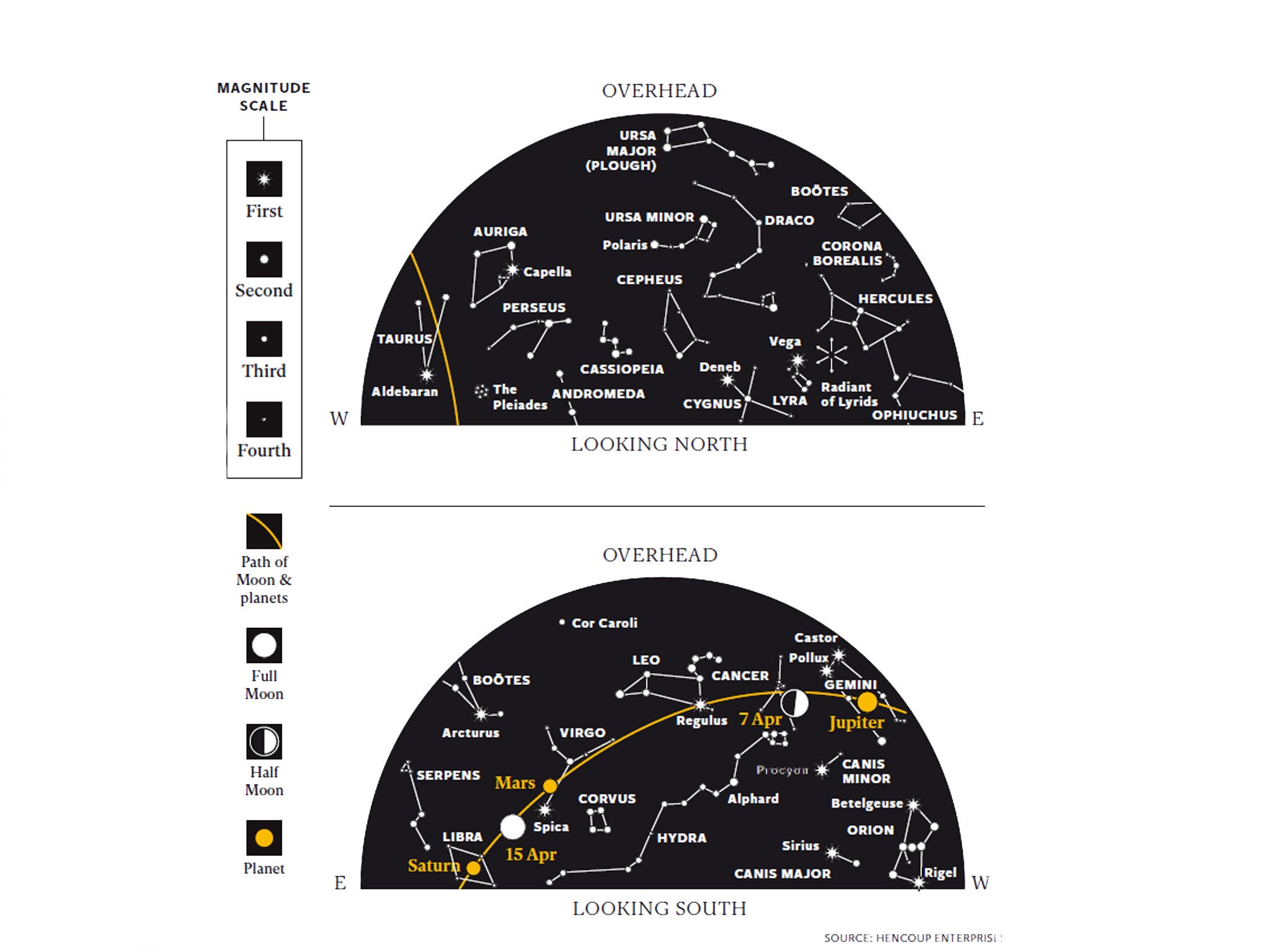
Mars takes centre-stage in the heavens this month, glaring a brilliant red in the constellation of Virgo. On 8 April, the Red Planet will be at opposition – opposite the Sun in the sky – and six days later Mars will be the closest to Earth that it's been for six years.
Beg, borrow or steal a medium-sized telescope – one sporting a mirror six inches across or more – to observe this fascinating world. Roughly half the size of Earth, it has an orange surface boasting vast, dark, rock expanses. And at this opposition, Mars' north pole is tilted towards our planet, sporting a bright, polar cap made of carbon-dioxide ice and water ice.
Where there's water, there could be life. The planet's rusty colour attests to a watery past, before its atmosphere largely evaporated – as a result of Mars' low gravity.
Many of the rovers and orbiting probes now up close and personal to the Red Planet have found evidence for dried-up rivers, and even oceans on Mars. But what about life? Although it is a deeply-debated result, we are pretty convinced that one of the experiments on NASA's Viking mission in 1976 tested positive for life – not "little green men" but "little green slime".
With probes orbiting Mars, and trundling around its surface even as we speak, the exploration of our neighbour-world is ramping up. In September, two probes are to rendezvous with the Red Planet. India's Mars Orbiter Mission (MOM) will scan the planet's atmosphere for traces of methane. This gas has been picked up sporadically in the Martian atmosphere before, but detections have been patchy. Methane could be an indicator of life – or it may be a result of volcanic activity.

The second probe to arrive will be NASA's MAVEN (Mars Explorer and Volatile Evolution), designed to scoop up molecules in the planet's thin, upper atmosphere.
Meanwhile, scientists in Stevenage are building a sandpit! Not to play in – but to test out the joint European Space Agency/Russian rover ExoMars. Due to be launched to the Red Planet in 2018, ESA's rover will be British-built.
The sandpit – called a "Mars Yard" – will put ExoMars through its paces. Filled with 300 tonnes of sand, it simulates a real Martian surface – complete with obstacles like boulders. Even the environment is painted reddish-brown to make sure that ExoMars' navigation cameras can practice before it gets to the real destination.
The rover will also experiment with drilling techniques, and analyse samples of soil – specifically to answer the question as to whether life ever has – or does – exist on the Red Planet.
WHAT'S UP
We have a cornucopia of bright planets these April nights. First in line is Jupiter: the giant planet has been lording it over the evening sky for months now, and it's still putting on a brilliant show in the western sky. But this month it's being challenged by the upstart Mars.
Rising in the east as the Sun sets, the Red Planet is visible all night. Though it's a tad fainter than Jupiter, Mars is equally impressive with its unique, ochre-red hue, contrasting with nearby blue-white star Spica – the brightest star in the Y-shaped constellation of Virgo.
High in the southern sky, between Jupiter and Mars, you'll find the celestial lion. The constellation of Leo is one of the few ancient star patterns that really does look like its namesake, a great lion that Hercules subdued with his bare hands. The lion's heart is marked by the bright star Regulus.
Saturn lies to the left of Mars, rising around 10pm. And if you're up before dawn, look low down in the twilight for the brilliant Morning Star, Venus, which rises about 5am.
WHAT TO LOOK FOR
- 7 April, 9.31 am: Moon at First Quarter
- 8 April: Mars at opposition
- 15 April, 8.42 am: Full Moon; total eclipse of the Moon (not visible from UK)
- 22/23 April: maximum of the Lyrid meteor shower
- 22 April, 8.51 am: Moon at Last Quarter
- 29 April, 7.14 am: New Moon; annular eclipse of the Sun (not visible from UK)
Join our commenting forum
Join thought-provoking conversations, follow other Independent readers and see their replies
Comments